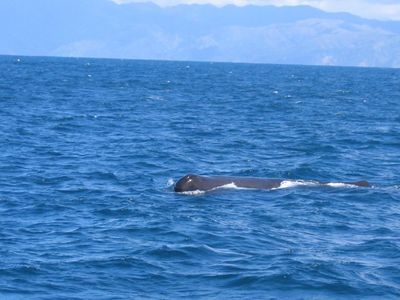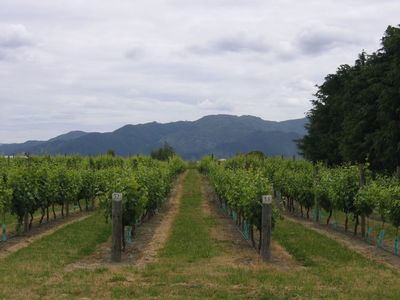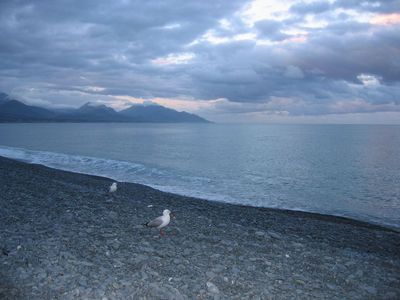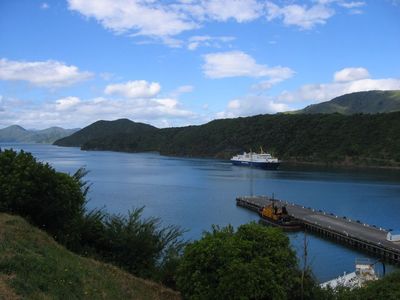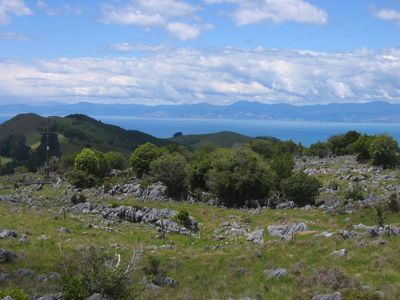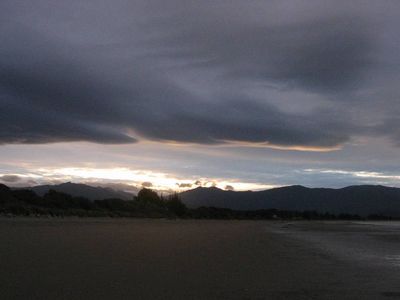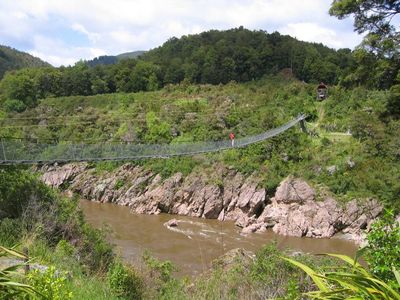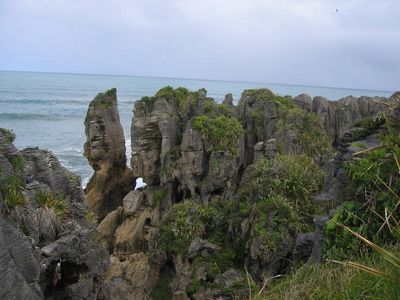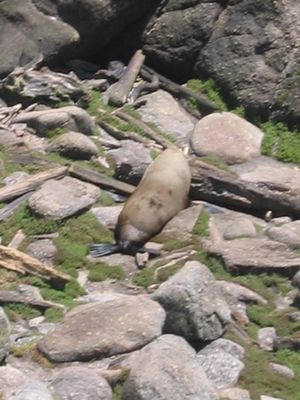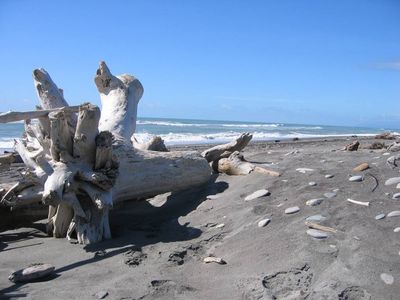We were booked on the 9:30 whale watching trip so got to the “Whaleway Station” good and early. As we looked from the station we could see the whales we’d seen the previous night still surfacing a little way off-shore. Our trip had a sea-sickness warning, with a swell of 1-2 metres, so Vic took some of the recommended sea-sickness tablets. We boarded a bus which took us to our boat, about 20-30 people in the party.
The boat was a very modern catamaran with jet-assisted propulsion which meant it could whizz along at a top speed of around 30 knots. As we surged through the waves leaving the marina it became clear we were in for a very bumpy ride as the boat rose up and slammed down between the waves. Within minutes a number of the passengers, Vic included, were looking very green, or rather white, and by the time we came to our first stop many were ready for a breath of fresh air (at the very least).
The captain of the boat had a hydrophone and was able to listen for the whales, and there was a very impressive video display with lots of computer graphics showing the boat location in realtime and the depth of the water etc. Kaikoura attracts so many whales because of an unusual geological feature. The continental shelf on which Kaikoura sits ends just 1 km away from the shore, with a cliff face then diving down from 100m deep to over 1km deep. This deep water so close to shore is rich in nutrients for the creatures (squid etc) which the whales live on. Male sperm whales are very common visitors to the area, and some remain for up to 8 months of the year, returning year after year.
After a few false alarms, one of the other boats out at the same time spotted a male sperm whale on the surface and we approached close enough to clearly see the huge creature (around 15m long) spouting water on the surface. After about 5 minutes on the surface the whale dived down, showing the famous “high tail” as it went down.

We moved around the water in the boat looking for more whales but none were showing up. Just as our two and a half hours at sea were coming to and end another sighting was made and we came within sight of another whale. On closer examination, it turned out it was actually the same male sperm male which we’d seen earlier, and he dived down again after a few minutes.
Vic’s enjoyment of the whole episode was somewhat spoiled by very bad sea-sickness, the tablets hadn’t helped at all and she ended up sleeping on the way back into harbour to counter the effects of the motion.

